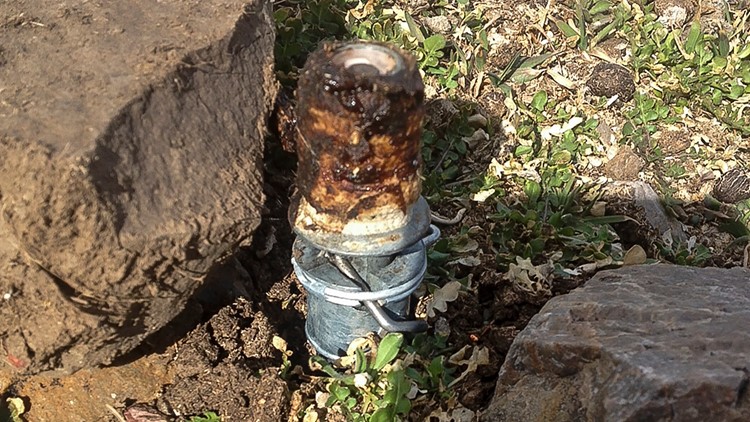BOISE, Idaho — A portion of a lawsuit brought by an Idaho family against the U.S. government after a boy and his dog tripped a cyanide-spraying, predator-killing trap near their home has been dismissed.
U.S. District Judge B. Lynn Winmill dismissed all personal injury claims Friday related to cyanide exposure to Mark and Theresa Mansfield and their son.
Canyon Mansfield was playing with his dog in March 2017 near his home when the then-14-year-old triggered the trap that the U.S. Department of Agriculture placed to kill coyotes. The dog named Casey died.
Winmill agreed with U.S. Department of Justice attorney Michele Greif that the Mansfields didn't prove they experienced ill effects from cyanide exposure or will experience them in the future.
The devices, called M-44s, are embedded in the ground and look like lawn sprinklers but spray cyanide when triggered by animals attracted by bait. They are meant to protect livestock but sometimes kill pets and injure people.
The traps drew increased scrutiny after the AP reported that the teen was injured months after the government decided to stop using the devices on federal lands in Idaho.
The Agriculture Department has acknowledged placing the device on U.S. Bureau of Land Management land and the negligence portion of the lawsuit remains alive.
"The major part of the case is still going forward," Javier Gabiola, an attorney representing the Mansfields, said Monday.
Gabiola said the family is seeking unspecified damages related to Canyon Mansfield's pain and suffering. The court also will consider the monetary value of the dog, a 3-year-old yellow Lab.
Winmill dismissed Mark and Theresa Mansfield's negligent infliction of emotional distress claims because, court documents said, under state law parents cannot recover damages for emotional distress derived from a child's injuries.
Mark Mansfield didn't return a call from The Associated Press. The Justice Department also didn't respond to an inquiry from the AP.
The initial lawsuit filed in June 2018 said that when Canyon Mansfield "reached down and touched the pipe, it exploded with a loud bang, knocking CM to the ground and spewing an orange powdery substance."
Court documents say he used snow to rinse the powder from his eye and clothes.
The Trump administration earlier this month rejected calls for a ban on the devices.
The U.S. Department of Agriculture's Wildlife Services uses the devices to kill coyotes and other livestock predators, mostly in the Western U.S. In 2018, M-44s killed about 6,500 animals, mainly coyotes and foxes. That was down from about 13,200 animals in 2017.
In 2015, coyotes accounted for 17,000 deaths among the country's 112 million cattle and calves, the Agriculture Department estimated.
The EPA said that between Jan. 1, 2013, and April 16, 2018, there were two reported incidents involving the poison. Environmental groups, who are trying to get the devices banned, in different court actions say that over the past 20 years, the devices have killed about 40 dogs and injured a handful of people.



